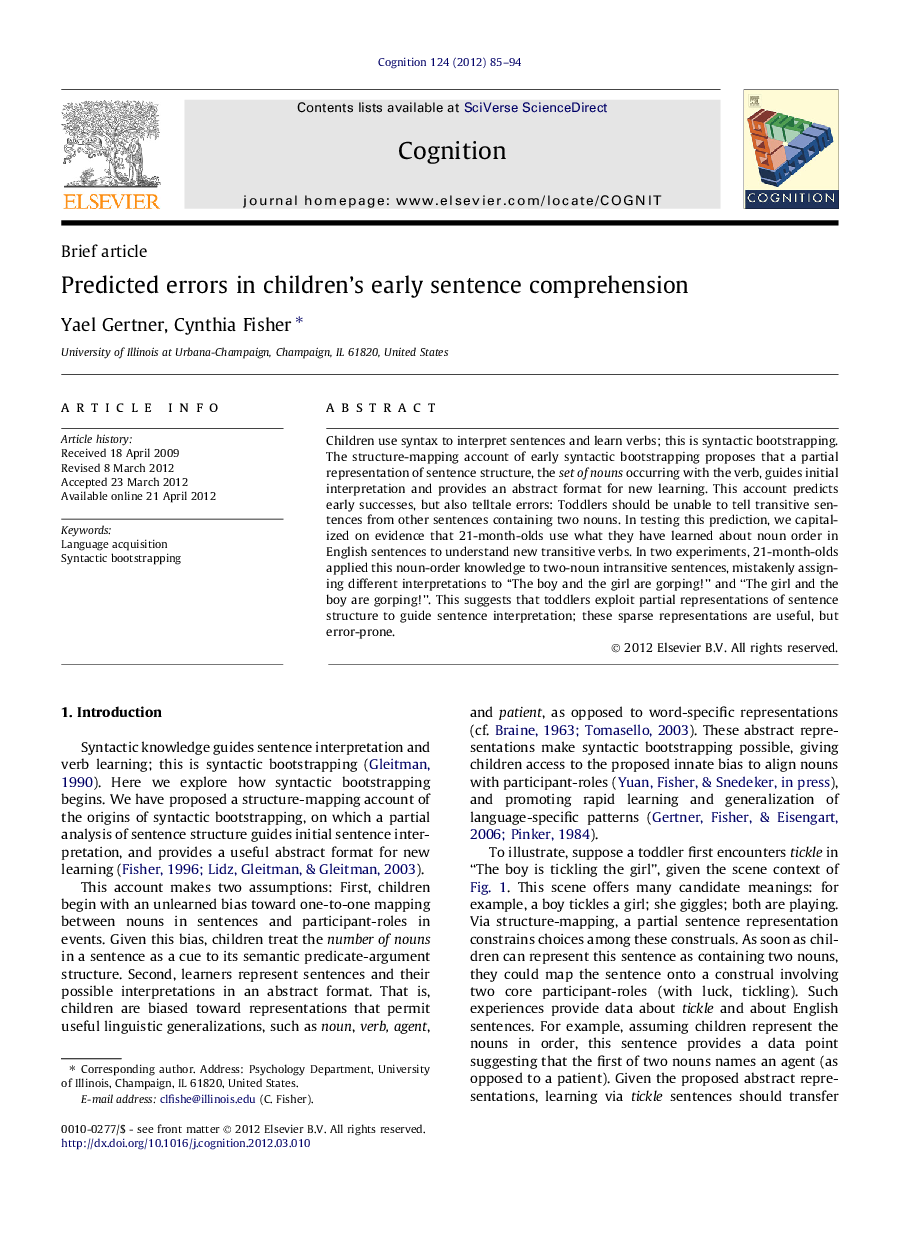| Article ID | Journal | Published Year | Pages | File Type |
|---|---|---|---|---|
| 10457670 | Cognition | 2012 | 10 Pages |
Abstract
Children use syntax to interpret sentences and learn verbs; this is syntactic bootstrapping. The structure-mapping account of early syntactic bootstrapping proposes that a partial representation of sentence structure, the set of nouns occurring with the verb, guides initial interpretation and provides an abstract format for new learning. This account predicts early successes, but also telltale errors: Toddlers should be unable to tell transitive sentences from other sentences containing two nouns. In testing this prediction, we capitalized on evidence that 21-month-olds use what they have learned about noun order in English sentences to understand new transitive verbs. In two experiments, 21-month-olds applied this noun-order knowledge to two-noun intransitive sentences, mistakenly assigning different interpretations to “The boy and the girl are gorping!” and “The girl and the boy are gorping!”. This suggests that toddlers exploit partial representations of sentence structure to guide sentence interpretation; these sparse representations are useful, but error-prone.
Related Topics
Life Sciences
Neuroscience
Cognitive Neuroscience
Authors
Yael Gertner, Cynthia Fisher,
